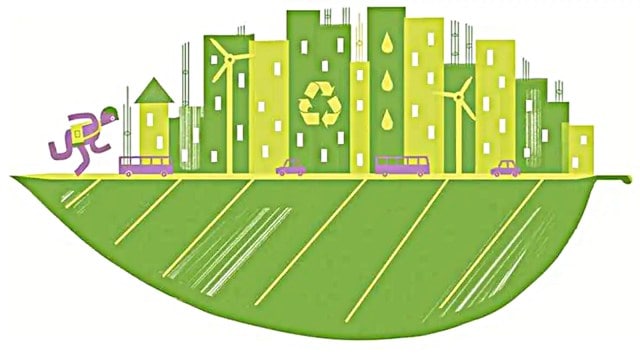Experts at IE THINC: ‘We need optimal solutions for emissions’
In this edition of IE-Thinc, experts talk about the surging pace of urbanisation, the need for census towns, masterplans for economic growth and why municipalities need more governance power.
 "Large cities around the world had the metropolitan architecture and most of the time inserted the metropolitan mayor system. A metropolitan mayor like London has boroughs with local governance like our small municipalities."
"Large cities around the world had the metropolitan architecture and most of the time inserted the metropolitan mayor system. A metropolitan mayor like London has boroughs with local governance like our small municipalities."In this edition of IE-Thinc, experts talk about the surging pace of urbanisation, the need for census towns, masterplans for economic growth and why municipalities need more governance power. The session was moderated by Udit Misra, Associate Editor, The Indian Express
On urbanisation in India and globally
Shirish Sankhe: The percentage of urbanisation in India is up for debate but is currently around 36 per cent. Probably with the new census, may be another five per cent — 40 per cent moving on to 60 per cent over a period of time. Around 80 per cent of the taxes and around 60-65 per cent of the GDP are coming from urban areas. This is a growth driver for India. Tamil Nadu, Gujarat, Maharashtra, Karnataka and Punjab will be 50 per cent urbanised by 2030. If you come from state to city, there are 68 cities which will have more than one million people in the next few years. About 13 Tier I cities will have about four million people by 2030.
Our sense is that you’re fighting this battle with both arms tied around the back and almost nothing you can do at the local level will change this unless the funding part changes. On the planning front, it’s 5-10-25 year cycles and it has two elements — an economic master plan and transportation master plan. The last part is governance.
Large cities around the world had the metropolitan architecture and most of the time inserted the metropolitan mayor system. A metropolitan mayor like London has boroughs with local governance like our small municipalities. Then there’s a metropolitan mayor who sits on the top and is responsible for many departments. India has made huge strides towards urbanisation but I would still give it two or three out of 10 in terms of evolving the system of urbanisation for the next 25 years that will ensure that our cities are well-planned and better than the haphazard way it is happening. It’s not a lost deal, everybody is working on it.
On public finance and fiscal devolution
Dr M Govinda Rao: Cities are the leading edge of economic dynamism and they create agglomeration economies. They enable productive interactions with people, which lead to competitiveness, innovation and improvement in productivity. But whether we can harness their potential as triggers of economic dynamism depends upon the enabling environment. This means basic standards of public services provided, good policies, quality institutions and a tolerant environment.
As far as the functions are concerned, there is a concern in the 74th amendment to the Constitution. The seventh schedule to the Constitution basically says local governments are the state’s responsibility and you have article 243-W, which says that the state government may, at its discretion, devolve 18 functions to them. It is left to the State Government to decide what it wants to devolve and what not. So there is no clarity in assignment. One of the basic implementable rules of fiscal decentralisation is that you should have clarity in assignments; there should be sufficient funds that are allocated for it and urban local bodies should have their own funds and functionaries. Even when the state government says that these are the functions that you may do, they may not have the sufficient funds. So they have an unfunded mandate.
When we come to our own resources, in most cases the major source is the property tax. This constitutes less than 0.14 per cent of the GDP.
The problem is that you have poor levels of public service. Property tax is partly a user charge and partly a tax. There are models in fiscal federalism which say the people choose the level of public services and taxes which are most closely aligned with their preferences. But when you have low levels of services, there is a vicious circle — poor services, low levels of property tax collection, leading to poorer services — which is a very serious issue.
On what ails urbanisation in India
Srikanth Viswanathan: The diagnosis so far is that we’ve seen urbanisation and urban governance reforms in India from a national perspective. I think everybody is discovering there are at least 35 different diagnoses that are needed. This is not a Union Government issue, it is a state level issue.
You need a single point of political accountability like you have at the Union level or at the provincial level. The ministers for water and for each of the other infrastructure areas or social infrastructure areas report to the person who governs the geographical entity. So, the Prime Minister and the Chief Minister’s remit is defined by geography besides functions allocated to those levels of government. India has not recognised the city as a distinct unit of governance or of the economy, either constitutionally or statutorily.
So we often look at the city agenda through the lens of service delivery and infrastructure, more precisely as an aggregation of different services and infrastructure. We look at grievances that citizens have without thinking of them as a human development agenda that is place- and people-based, which we often do at the Union and state level. Our state Vidhan Sabhas are quite inactive.
We’ve studied the number of amendments to municipal laws and they are few and far between. They have not kept pace with amendments to municipal laws. That’s why town and country planning laws have not kept pace with contemporary needs of urban India.
This is also partially on account of slightly meta issues like the anti-defection law, where there is no chance for the urban representative to put forward their agenda forcefully. That said, it is not that there has not been any movement. In the last 10 years, there is a 488 per cent increase in the allocation at the Union level for 2009-10 and 2021-22.
If there has been a 488 per cent increase in funding allocation, perhaps a little more can be done on thought leadership. But every additional rupee that you are going to lay out at the Union level is not necessarily going to give you returns.
On political leadership for urbanisation
D Thara: The narrative has been that urban local bodies have no power. Therefore, they are not able to perform, have no political relevance and are not getting funds. If 78 per cent people live in the urban local bodies, do you think any political dispensation can do away with their votes?
On the political level, there is a lot of focus on the state and urban bodies. Today everything gets analysed in 10 memes or 15 social media posts. Absolutely, the compulsion for performance is high.
I can tell you my experience from the national and state levels. First, it’s more positive than negative. Cities are labour markets, they are not anything else.
Whether you are a Union government or a State government, a GIS-based master planning will not change everything. But somewhere the conversation has to start. Urban planning in some states did very well. Gujarat has been the pioneer of it whether we like it or not. Ahmedabad and Surat are the cities where slums have gone down from 30 per cent and 25 per cent to 11 per cent and five per cent.
The political leadership, which was there at the state level, is now at the country level. It was the Prime Minister who drew the blueprint of urban planning. Urban planning is not an expertis-driven exercise, it is a political exercise; the political leadership has to take the call. Urban planning is not just about regulation. It is pure economics where a citizen has to win along with the city.
On rise in the number of census towns
Prof Debolina Kundu : According to projections by the Union Ministry of Health and Family Welfare, 50 per cent of the country will be urbanised by 2047. By the middle of this century, 53 per cent of the population (877 million) are expected to be living in urban areas.
The National Account Statistics had pegged the economic contribution of urban areas to the GDP in 2011-12 (published in 2017-18) at 52.05 per cent.
When we look at the pattern of urbanisation as of 2022-23, we have 4,962 statutory towns, 62 cantonment boards and 4,900 statutory towns. If we look at the size-class structure, we find a top-heavy urban population. More than 70 per cent of the population are living in class-one cities, whereas we have a very bottom-heavy number of towns. More than 87 per cent of the towns have a population below 1,00,000. One important reason is the high share of new census towns, which came up in the last decade. We also have a low share of rural-to-urban migration.
The last census came up with a figure of around 91 million incremental population and around 37 per cent of that was basically because of the addition of new census towns.
Even by very conservative estimates, we will have at least 1,000 new census towns. In the last census, we had 2,530 new census towns which came up. In-situ urbanisation is happening — you are where you are but because of sectoral diversification, there is urbanisation. These census towns are not urban by governance. They are under the Ministry of Panchayati Raj. So we are urban by definition but rural by governance.
In the current decade, we find that the increment in the urban population will be more than the rural because there is no backward migration. What happened during COVID was something very specific but generally, migration happens from rural to urban areas. Since the 1980s, there has been a systematic decline in growth rates. Only in the last decade was there a 0.3 per cent increase in the urban growth rate because of the addition of census towns. By all projections, both rural and urban growth rates are likely to decline.







